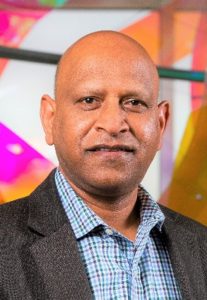ECE Distinguished Lecture — November 14, 2023 at 12pm (Simrall Hall 104)
November 8, 2023
Please join us for our Fall ECE Distinguished Lecture Seminar on Tuesday the 14th, 12:00 pm in Simrall 104.
High Power Density Superconducting Cables for Electric Aircraft and Ships – Opportunities and Challenges
Sastry Pamidi
FAMU-FSU College of Engineering and Center for Advanced Power Systems
Tallahassee, Florida
Abstract: FAMU-FSU College of Engineering and CAPS and the major R&D activities beyond superconductivity. Second Generation High Temperature Superconducting (2GHTS) power systems are being developed for various applications, including the electrical power grid, industrial applications, data centers, high energy physics, electric ships, and electric aircraft. There are some common requirements and design features for HTS devices for all the applications. However, the design requirements for electric transportation applications such as electric aircraft and electric ships are more stringent in terms of gravimetric and volumetric power densities. The power density demands require that the HTS generators and motors in electric transportation applications operate at temperatures between 20 and 50 K to compensate for the reduction in critical current density and AC losses under the substantial magnetic fields present in the rotating machines. HTS power distribution cables, however, can achieve high enough current densities when operated at higher temperatures of 40 – 70 K. The primary challenges with power cables that carry multiple kA are cable terminations, electrical insulation, and cryogenic interfaces. Innovative compact designs are needed to address the challenges in dielectric and cryogenic thermal designs. We at the Center for Advanced Power Systems (CAPS) are collaborating with other academic institutions and several small businesses to address the challenges of AC losses in HTS rotating machines and making the interfaces (terminations) for HTS cable systems compact. We have ongoing work on cryogenic dielectrics and cooling systems for HTS applications for electric transportation applications. The Presentation will focus on the ongoing research and recent collaborative accomplishments in HTS power cables and other related areas.
 Biographical Notes: Sastry Pamidi received a Ph.D. (1992) from the University of Bombay, India. He is currently a professor and serving as the Chair of the Department of Electrical and Computer Engineering at FAMU-FSU College of Engineering (www.eng.famu.fsu.edu). He is the Associate Director of the Center for Advanced Power Systems at Florida State University (www.caps.fsu.edu), where he leads a multidisciplinary research group focusing on superconducting power applications and cryogenic dielectrics. His research interests include high power density superconducting devices, cryogenic dielectrics, advanced electrical insulation systems, advanced AC loss measurements, and applied cryogenics related to superconducting power applications. He has established advanced research facilities and testbeds to characterize superconducting cables cooled with gaseous helium. He has established a high voltage engineering laboratory specializing in the cryogenic dielectric characterization of insulation materials and designs for superconducting power applications. He has collaborated with several research groups and delivered invited presentations at many international conferences. He published three book chapters and 200+ papers. He has active collaborations with superconducting wire manufacturers and several small businesses. He has served on the technical committees of many international conferences. Dr. Pamidi is active in IEEE and is the Chair of the Power and Energy Chapter of the local IEEE Section. He is a Fellow of the Cryogenic Society of America.
Biographical Notes: Sastry Pamidi received a Ph.D. (1992) from the University of Bombay, India. He is currently a professor and serving as the Chair of the Department of Electrical and Computer Engineering at FAMU-FSU College of Engineering (www.eng.famu.fsu.edu). He is the Associate Director of the Center for Advanced Power Systems at Florida State University (www.caps.fsu.edu), where he leads a multidisciplinary research group focusing on superconducting power applications and cryogenic dielectrics. His research interests include high power density superconducting devices, cryogenic dielectrics, advanced electrical insulation systems, advanced AC loss measurements, and applied cryogenics related to superconducting power applications. He has established advanced research facilities and testbeds to characterize superconducting cables cooled with gaseous helium. He has established a high voltage engineering laboratory specializing in the cryogenic dielectric characterization of insulation materials and designs for superconducting power applications. He has collaborated with several research groups and delivered invited presentations at many international conferences. He published three book chapters and 200+ papers. He has active collaborations with superconducting wire manufacturers and several small businesses. He has served on the technical committees of many international conferences. Dr. Pamidi is active in IEEE and is the Chair of the Power and Energy Chapter of the local IEEE Section. He is a Fellow of the Cryogenic Society of America.
For further information contact: David Wallace | david@ece.msstate.edu| 662.325.2009
The Department of Electrical and Computer Engineering at Mississippi State University consists of 27 faculty members (including seven endowed professors), seven professional staff, and over 700 undergraduate and graduate students, with approximately 100 being at the Ph.D. level. With a research expenditure of over $14.24 million, the department houses the largest High Voltage Laboratory among North American universities.
